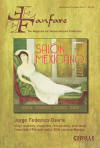Texte paru dans: / Appeared in:

Fanfare Magazine: 36:1 (09-10/2012)
Pour
s'abonner / Subscription information
Les abonnés à Fanfare Magazine ont accès aux archives du
magazine sur internet.
Subscribers to Fanfare Magazine have access to the archives of the magazine
on the net.
Harmonia Mundi
HMC902087
3149020208724 (IDV31)
Consultez toutes les évaluations recensées pour ce cd
~~~~ Reach all the evaluations located for this CD
Although this release is labeled Barockes Welttheater, its subtitle above gives a far better idea of its content. As I noted in a review of Schmelzer’s ballet suites and sonatas (Arcana A339) a couple of years ago, the composer entertained the Austrian courts of Ferdinand III and later Leopold I, Holy Roman Emperors. They were both artistically minded and shared very conservative Italianate tastes, with a marked preference for the masque-like entertainments of the late 16th century as practiced at the courts of the Este, who were dukes of Ferrara, and the Sforza, who were dukes of Milan. Throw in a curious taste for balletti a cavallo—equestrian pageants involving hundreds of horses prancing about to the accompaniment of roughly 100 musicians—and you have a good idea of at least some of Schmelzer’s more distinctive responsibilities to his imperial employers. They in turn were so pleased that he was eventually ennobled, and became the first non-Italian Kapellmeister of a large, prestigious, and well-funded musical establishment.
Curiously, few releases focus on the secular music of this most approachable of Baroque Austrian composers. He is most likely to appear by way of a single work in a collection, despite the immediate tunefulness of much that he wrote, and the fine quality he maintained throughout his long career. Perhaps it is this very accessibility that has worked against him. Austrian and German early-music ensembles often unearth and perform very sober sacred and secular music, while Schmelzer’s oeuvre represents a graceful, Mediterranean side of Austrian classical music-making that is all too often ignored. There’s certainly nothing to be ashamed about in this composer’s music, however. Ferdinand and Leopold may have been equine-mad, but they were competent musicians themselves, and sophisticated arbiters of artistic taste. The dance music of Schmelzer is rhythmically zestful and thematically diverse, with occasional, unexpected harmonic progressions and frequent shifts of mood providing strong elements of variety. His sonatas in turn are in the best tradition of Marco Uccellini, with their sophisticated combination of dramatic recitatives, slow, voiceless arias, and fast dances. They are meant to display the tone, agility, and lyrical bowing of a virtuoso performer on a string instrument, and do so admirably. It’s worth remembering that Schmelzer enjoyed a reputation as one of the finest violinists of his generation, so it’s not unnatural to assume that he wrote these sonatas to spotlight his own accomplishments.
The works presented on this album are well chosen, with the best-known probably being the Polnische Sackpfeiffen. (It appears in at least three other collections, of which my favorite before this was Vienna 1700 by Armonico Tributo: CPO 999919.) Like similar fantasy pieces of the Baroque, its point is to surprise and delight, and its stew of deliberately disjointed folk juxtapositions based on the music of Polish bagpipers succeeds admirably. The Freiburg Baroque Consort—part of Gottfried von der Goltz’s Freiburg Baroque Orchestra—is composed here of 10 musicians: two violinists, two violists, two gambists, a lutenist, percussionist, and a keyboard player. Everything is stylishly done, theatrically alive, and technically expert. Particular praise is due Petra Müllejans and Beatrix Hülsemann for their well-chosen ornamentation and expressive bowing in the Sonata a due in D Minor.
I have no
idea whether this will prove a breakthrough disc that leads more early-music
ensembles in search of popular material to examine the enormous amount of
similar music still preserved of Schmelzer—more than 150 edited and
published ballet suites and 80 sonatas, with more in manuscript—but the
sheer pleasure of the music and in these performances makes this release a
delight. It is light Baroque entertainment at its most enchanting.
Fermer la fenêtre/Close window
Cliquez l'un ou l'autre
bouton pour découvrir bien d'autres critiques de CD
Click either button for many other reviews


